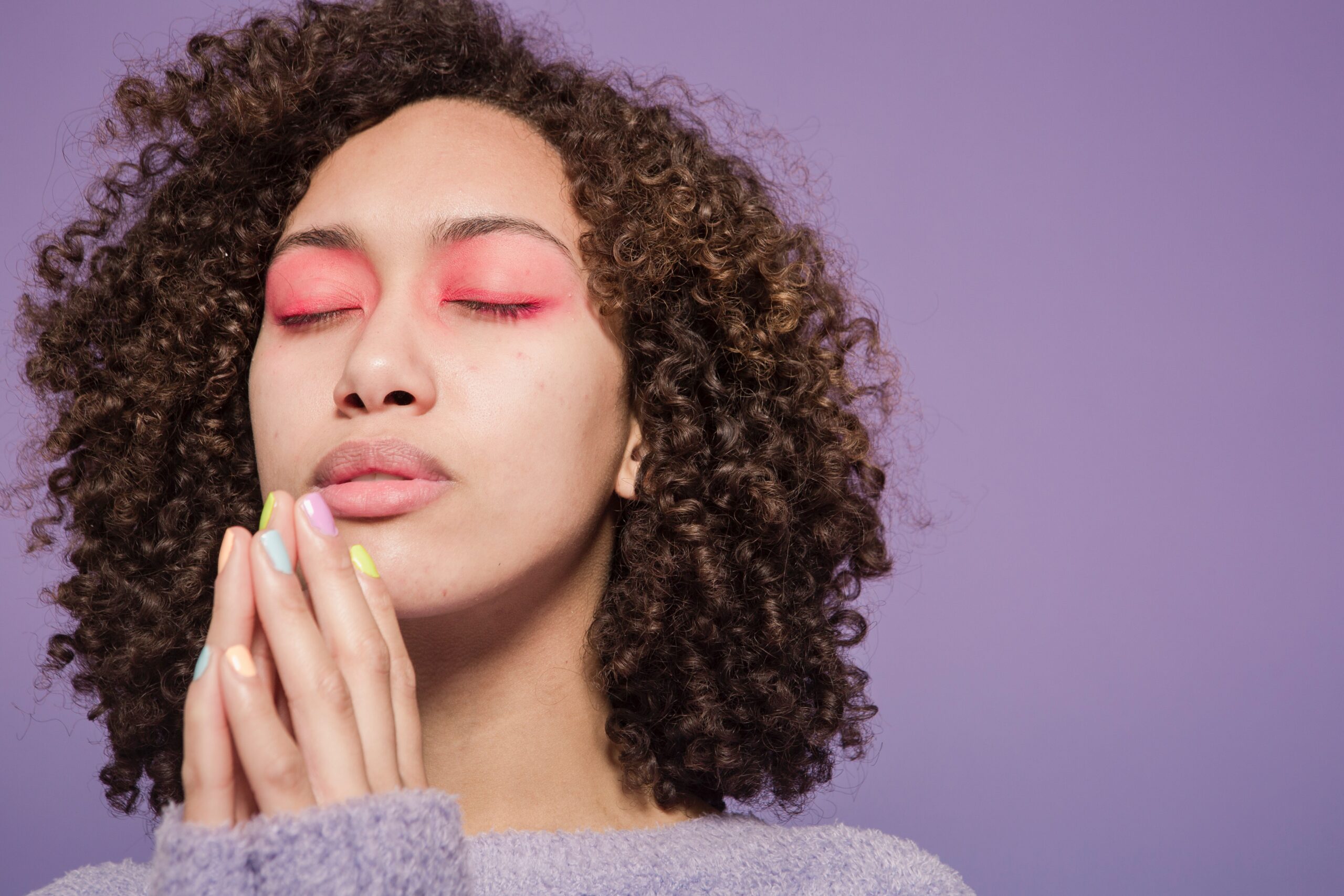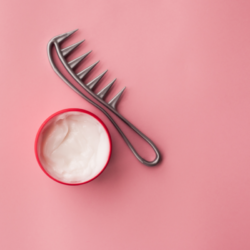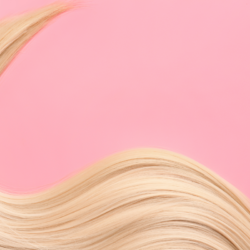Hair colour enthusiasts currently have access to a wide choice of hair colouring products on the market. But it’s not always easy to know which product is best for your hair type. Unfortunately, some products can have undesirable effects on the hair fibre and scalp. To remedy this problem, specialists have decided to develop plant-based dyes. As well as being 100% organic, these are an interesting alternative for caring for your hair, while colouring it at the same time. A brief explanation in the following paragraphs.
Where do vegetable-based dyes come from?
The history of vegetable hair dyes dates back to ancient times, when they were already used for their colouring and caring properties. These traditional methods, using natural ingredients such as henna, basma and indigo, were widespread in various cultures around the world. Over the centuries, these practices have adapted and evolved, incorporating new botanical discoveries and responding to the changing demands of fashion and beauty. Today, with growing awareness of health and ecological issues, plant-based colourings are enjoying a revival of interest. They are appreciated for their gentleness, their respect for the environment and their ability to care for and embellish hair in a natural way. This trend reflects a return to our roots and a search for beauty methods that are more in line with a sustainable lifestyle that respects the environment.
What is plant-based hair colour?
Botanical hair colour is a hair dyeing process that uses only natural ingredients, mainly derived from plants. This type of colouring differs from chemical dyes in that it respects the hair structure and the environment.
What ingredients are contained in vegetable dyes?
The key ingredients in plant-based colours are natural pigments extracted from various plants. These components, such as henna, indigo and other plant extracts, colour the hair by depositing on its surface, without penetrating the hair fibre.
Unlike chemical hair colour, vegetable hair colour contains only natural, organic elements. It’s essentially made up of dried plant powders mixed with water. So it’s a far cry from formulas containing a dozen or so ingredients such as ammonia, resorcinol or paraphenylenediamine.
Plant-based hair colour is made from dye plants (henna, blackcurrant, etc.) and ayurvedic plants (amla, sidr, etc.). The first plants are chosen for their colouring pigments, which enable the desired shade to be obtained. As for the latter, they are prized in the world of beauty and well-being for their fixing properties. In other words, they are used to ensure that the colours hold effectively and lastingly on your future dream hair! They also add shine to the hair.
Comparison with chemical colourants
Unlike chemical dyes, which contain substances such as ammonia and parabens, vegetable dyes are free from these aggressive compounds. This means they preserve the health and integrity of the hair. While chemical dyes can alter the structure of the hair, plant dyes offer a gentler, less damaging alternative.
How do plant-based dyes work?
The process of colouring hair with vegetable dyes is simple and natural. These products work by depositing natural pigments on the surface of the hair. These pigments, derived from different plants, bind to the hair fibres without penetrating deeply. This makes it possible to colour the hair while preserving its structure and integrity.
Colouring process
To colour hair with a plant-based dye, the product is usually mixed with warm water to form a paste. This paste is then applied to the hair, ensuring that each strand is evenly covered. After a recommended rest period, the hair is rinsed with warm water until the water runs clear.
Durability and care
The durability of vegetable-based colours can vary according to hair type and the care taken. Generally speaking, they don’t last as long as chemical colours, but can be reapplied without damage. To prolong the colour’s hold, we recommend using gentle, natural hair care products specially designed for coloured hair. This will help preserve colour and hair health over the long term.
Tips for successful vegetable colouring
First and foremost, it’s essential to prepare your hair properly for plant-based colouring. Here are the steps to follow for a successful natural plant-based colour:
How do I prepare my hair for colouring?
Before colouring with plant-based hair colour, it’s essential to prepare your hair properly. Here are a few tips for effective preparation:
- Cleanse thoroughly: Before colouring, wash your hair with a clarifying shampoo to remove hair product residue and natural oils. This will allow the plant pigments to adhere better to the hair.
- Moisturise: Apply a moisturising mask a few days before colouring to prepare your hair thoroughly. Well-hydrated hair will have a better ability to absorb and hold colour.
Post-colour care
After colouring your hair with a vegetable-based colour, it’s important to follow a proper maintenance regime to prolong the life of the colour and preserve the health of the hair. Here are a few tips for effective maintenance:
- Gentle shampoos: Use gentle shampoos formulated specifically for coloured hair, without sulphates or harsh products. These products will help maintain colour while keeping hair healthy.
- Spacing out washes: Limit the frequency of washes to avoid fading colour too quickly. Hot water can also accelerate colour fading, so try to use lukewarm or cold water when washing.
- Nourishing care: Incorporate nourishing treatments into your hair routine, such as moisturising oils or masks, to keep colour-treated hair hydrated and shiny. This will help prevent dryness and damage caused by colouring.
By following these preparation and maintenance steps, you can ensure vibrant, long-lasting colour while maintaining the health of your hair.
The benefits of using vegetable-based hair colour
As you’ll have realised, opting for vegetable-based hair colour is much more beneficial than opting for chemical hair colour. And here are the reasons why:
- It’s 100% natural, because it’s made exclusively from plant powders and water;
- It offers a wide choice of natural colours (henna and indigo for chestnut and brown or copper, blackcurrant and turmeric for blonde highlights);
- It’s quick and easy to apply;
- It lasts over time;
- Strengthens hair by enveloping and nourishing it;
- It adds shine to hair;
- It can be used by pregnant women because it is natural;
- Its natural ingredients reduce the risk of allergies.
Why choose plant-based hair colour?
Plant-based colours have significant benefits for the hair. Their natural composition helps to strengthen the hair fibre, minimising damage. What’s more, they improve hair’s texture and shine by preserving its natural moisture, making it shinier and silkier.
Hair strengthening
Thanks to their natural ingredients, vegetable dyes offer a significant advantage in terms of hair strengthening. Compared to synthetic dyes, they are generally less aggressive to the hair, helping to minimise damage to the hair fibre. By helping to preserve hair structure, they help to keep hair stronger and more resistant.
Improved texture and shine
One of the remarkable features of plant-based colours is their ability to improve hair texture and shine. By avoiding the use of harsh chemicals, they preserve hair’s natural moisture, making it shinier and silkier. This moisture retention helps to maintain the hair’s healthy appearance and pleasant texture, enhancing its overall shine and appearance.
Recent advances in vegetable colouring
In the field of beauty and hair care, interest in natural and ecological products is constantly growing. This article looks at a recent study entitled “Recent Advancements in Natural Plant Colorants Used for Hair Dye Applications: A Review”, published in the scientific journal “Molecules” in 2022. This study explores recent advances in the use of natural plant dyes for hair dyeing, offering an alternative to traditional chemical dyes.
Importance of natural dyes in hair dyeing
Natural dyes derived from plants are gaining in popularity due to their safety, environmental friendliness and potential health benefits. Unlike synthetic dyes, they are often perceived as being gentler on the hair and scalp. This study highlights the growing importance of research into plant-based dyes, at a time when consumers are increasingly concerned about the composition of the products they use.
Main findings of the study
The study reveals several key advances in the field of natural hair dyes:
- Diversity of Plant Sources: The study identifies a wide range of plants used to extract natural dyes, including lesser-known plants, opening up new possibilities for varied and unique shades.
- Improved Stability and Durability: Researchers have made significant progress in increasing the stability of natural dyes, resulting in better colour retention on hair.
- Additional Hair Benefits: Some natural colourants offer additional benefits, such as hair nutrition and fortification, in addition to their colouring role.
- Innovative Extraction and Application Technologies: The study also looks at new methods of extracting and applying dyes, making their use more effective and accessible.
This study highlights the importance of natural colourants in the hair colour sector. It highlights the progress made in developing safer, longer-lasting dye solutions that are beneficial to hair health. With the growing trend towards the use of natural products, this research paves the way for future innovations in the beauty and hair care industry.
What plants are used to colour hair?
These plants offer an extensive and unique palette of colours, responding to the growing demand for natural alternatives in hair colouring. Here are some specific examples of plants mentioned in the study:
- Henna (Lawsonia inermis): In addition to its ability to colour hair, henna is known for its strengthening properties. It can help reduce hair breakage, improve shine and maintain the balance of the scalp.
- Amla (Phyllanthus emblica): Amla is rich in vitamin C and antioxidants, making it an excellent ingredient for stimulating hair growth, strengthening roots and maintaining a healthy scalp.
- Indigo (Indigofera tinctoria): Although primarily used for its dye, indigo can also contribute to hair health by offering soothing properties for the scalp.
- Chamomile (Matricaria chamomilla): Known for its calming effects, chamomile is beneficial for soothing irritated scalps and reducing inflammation, while naturally lightening hair.
- Turmeric (Curcuma longa): Turmeric is known for its antiseptic and anti-inflammatory properties, helping to maintain a healthy scalp and combat dandruff.
- Black tea (Camellia sinensis): Black tea contains antioxidants that can help strengthen hair, reduce hair loss and increase shine and luster.
- Walnuts (Juglans spp.): Walnut extracts are rich in oils and vitamins that nourish hair, making it stronger and more resistant.
- Rhubarb (Rheum spp.): Rhubarb can help cleanse the scalp and remove excess oil, while adding a luminous tint to hair.
- Beetroot (Beta vulgaris): Rich in essential nutrients, beetroot can help improve the overall texture of hair and give it a healthier appearance.
- Safflower (Carthamus tinctorius): Safflower is known for its moisturising properties and can help condition dry, damaged hair.
These plants represent just some of the wealth of plant sources available for hair colouring. Each offers unique characteristics, both in terms of colour and hair care, allowing for personalisation and a natural experience in hair dyeing.
References
- Recent Advancements in Natural Plant Colorants Used for Hair Dye Applications: A Review. Molecules 2022,







